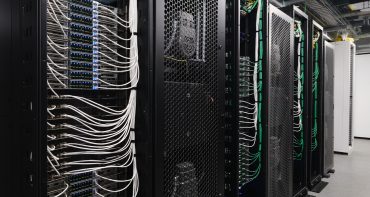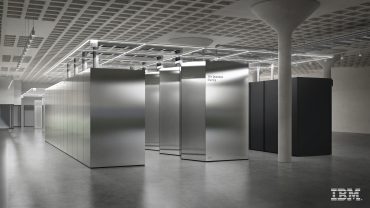

Cloud providers and tech giants accelerate data center expansion as AI computing demands surge across global markets
Key Takeaways
- $400 billion AI infrastructure investment surge projected for 2025 as OpenAI, Microsoft, Meta, and Google accelerate data center expansion, with cloud providers committing over $200 billion—a 50% increase from the previous year.
- Electricity demand explosion expected with U.S. data centers consuming 176 TWh in 2023, projected to reach 325-580 TWh by 2028, requiring more than 47,300 miles of new transmission lines by 2035.
- Enterprise AI adoption remains limited with only 14% of large companies deploying AI at scale despite 60% having some AI deployment, creating uncertainty about demand justification for massive infrastructure investments.
Introduction
Technology giants are embarking on an unprecedented infrastructure spending spree that could reshape the global economy. Major cloud providers have committed over $400 billion in AI capital expenditures for 2025, driven by the explosive growth of artificial intelligence applications and the computational demands they create.
This massive investment wave spans hyperscale data centers, power generation facilities, and networking infrastructure. Companies including OpenAI, Microsoft, Meta, and Google are racing to build the computational backbone needed to support AI workloads that consume exponentially more resources than traditional applications.
Key Developments
The Global AI Infrastructure Investment Partnership represents the scale of capital mobilization underway. This coalition involving BlackRock, Global Infrastructure Partners, Microsoft, and MGX aims to deploy $100 billion specifically for next-generation data centers and supporting power infrastructure across the U.S. and allied nations.
Strategic partnerships are emerging as companies seek to distribute risk and accelerate deployment timelines. OpenAI has forged partnerships with Oracle and CoreWeave to expand its infrastructure capacity, while Microsoft continues substantial investments in cloud infrastructure to support growing demand.
According to Investing.com, analysts identify three primary demand drivers: model training, consumer-facing inference, and enterprise applications. ChatGPT’s 600 million weekly active users demonstrates the consumer appetite driving infrastructure expansion.
Market Impact
The AI accelerator market shows dramatic growth projections, with UBS forecasting expansion from $125 billion in 2024 to over $300 billion by 2027. This growth trajectory has benefited semiconductor companies and infrastructure providers across the supply chain.
UBS maintains bullish outlooks for key beneficiaries including Nvidia in compute acceleration and Broadcom in networking infrastructure. Memory demand is expected to boost Micron, while Taiwan Semiconductor Manufacturing gains from its central role in AI chip production.
Infrastructure companies are experiencing significant momentum. Arista Networks, Ciena, Quanta Services, and Wistron Corp are capitalizing on the AI investment cycle, with hardware suppliers investing heavily in new fabrication facilities to address supply chain constraints.
Strategic Insights
The investment wave extends beyond traditional technology infrastructure into fundamental utility systems. McKinsey projects more than 250% growth in U.S. electricity demand between 2025 and 2030, requiring new power generation capacity and grid reinforcement.
Energy consumption patterns reveal the infrastructure challenge’s magnitude. Each AI query can consume more than 10 times the electricity of a Google search, with applications like ChatGPT estimated to consume 226.8 GWh annually—enough to power over 20,000 U.S. homes.
National security considerations are shaping investment patterns. Governments prioritize domestic AI capabilities and reduce reliance on foreign cloud providers, with regulatory changes streamlining project permitting to accelerate deployment timelines.
Expert Opinions and Data
UBS analysts conclude that “model training demands will continue to grow significantly,” supporting continued infrastructure investment despite concerns about overbuilding. The firm anticipates enterprise-driven demand emerging around 2026 as companies move beyond proof-of-concept stages.
The U.S. Department of Energy reports dramatic growth in data center electricity consumption, from 58 terawatt-hours in 2014 to 176 TWh in 2023. This trajectory supports infrastructure investment justification despite current enterprise adoption challenges.
Water infrastructure presents an unexpected requirement, with AI operations projected to need between two and three billion cubic meters of water by 2027 for cooling purposes. This adds complexity to infrastructure planning and environmental impact considerations.
Conclusion
The AI infrastructure investment surge represents both unprecedented opportunity and significant risk. While consumer demand and model training requirements support current spending levels, enterprise adoption remains limited and uncertain.
Companies are adopting increasingly strategic approaches to AI deployment, focusing on high-impact use cases rather than broad implementation. The industry faces supply-demand imbalances through 2025, making targeted investment decisions critical for long-term success.








